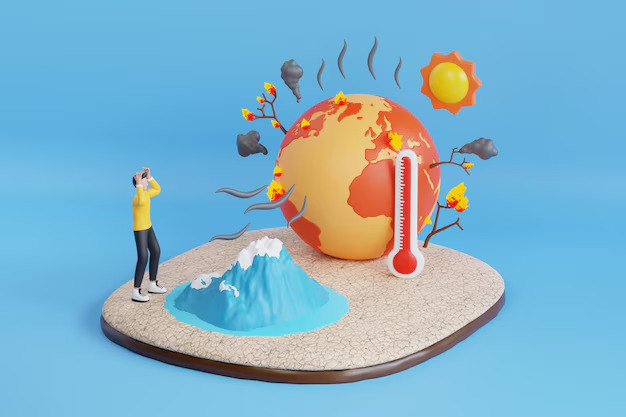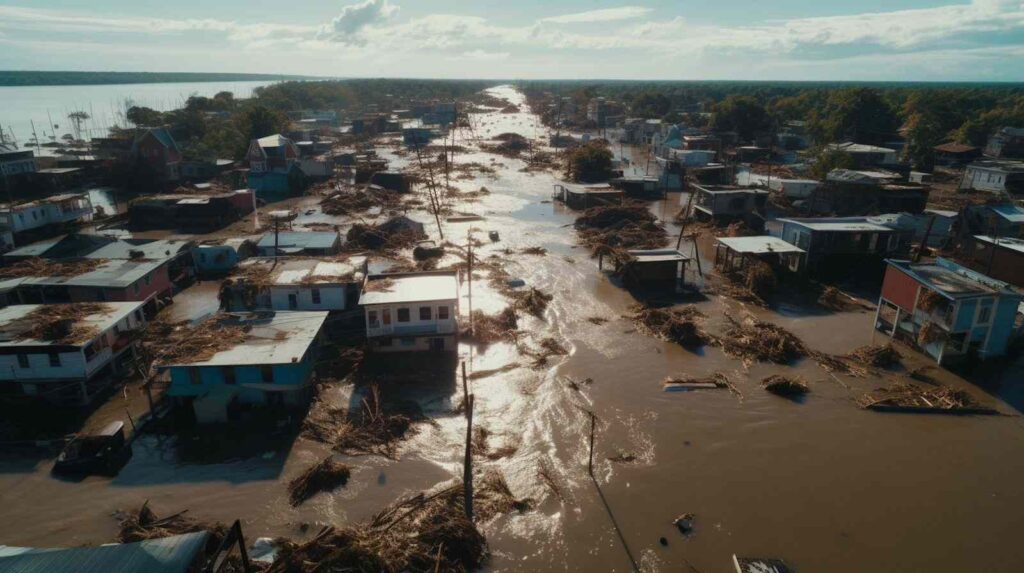Climate change has emerged as one of the most pressing global challenges, with far-reaching consequences not only for the environment but also for human health and healthcare systems. In a recent talk series, Dr. Devlina Bhattacharya, an expert in environmental science, highlighted the critical intersection of climate change and health, shedding light on innovative strategies to mitigate adverse effects. This article encapsulates the key insights from the discussion, offering a roadmap to tackle climate-related health issues effectively.
Rising Temperatures and Health Risks

One of the most alarming effects of climate change is the increasing frequency and intensity of heatwaves. In recent years, cities like Delhi have witnessed soaring temperatures reaching up to 50 degrees Celsius. This rise in temperature disproportionately affects vulnerable populations, including infants, the elderly, and pregnant women. Heat-related illnesses, such as heat strokes, heat exhaustion, and dehydration, have become more prevalent, contributing to increased morbidity and mortality rates. Additionally, extreme heat can exacerbate pre-existing health conditions like cardiovascular and respiratory diseases.
Several factors contribute to this extreme heat, including rapid urbanization and the proliferation of concrete structures. The loss of natural water bodies and green spaces exacerbates urban heat island effects, making cities significantly warmer than their rural counterparts. To combat this, urban planning must prioritize the preservation of lakes, ponds, and green corridors while implementing solutions such as reflective rooftops, green roofs, and solar panel integration to minimize heat absorption. Furthermore, the implementation of early warning systems for heatwaves, coupled with public awareness campaigns on heat safety, can significantly reduce heat-related health risks.

The Impact of Poor Urban Planning on Flooding
Dr. Bhattacharya emphasized that poor urban planning has led to increased incidents of urban flooding in cities like Chennai and Kerala. Illegal constructions, deforestation, and unplanned settlements have disrupted natural drainage systems, resulting in recurrent floods that displace thousands and damage infrastructure. These floods not only cause immediate health risks like drowning and injuries but also lead to long-term health consequences due to waterborne diseases, displacement, and mental health issues.
While relocating established communities is challenging, measures such as improved drainage systems, afforestation, and the incorporation of sustainable urban design can help mitigate the risks. Learning from ancient civilizations like the Indus Valley, which had efficient water management systems, can inform modern strategies to address urban flooding. Additionally, the implementation of green infrastructure solutions like rain gardens and permeable pavements can help absorb excess rainwater and reduce flood risks.

Biodiversity Loss and Climate Change
The loss of biodiversity is another significant consequence of climate change. The introduction of non-native species, such as water hyacinths, has disrupted local ecosystems by depleting oxygen levels in water bodies, leading to the decline of aquatic life and affecting the availability of fish as a food source. Similarly, species like eucalyptus and avocado trees, though beneficial in some aspects, have exacerbated water scarcity due to their high water consumption, impacting agriculture and human health.
Dr. Bhattacharya suggested focusing on native plant species and sustainable agricultural practices to restore ecological balance. She cited examples of innovative solutions such as phytoremediation using duckweed, which naturally purifies contaminated water bodies while supporting biodiversity. Additionally, the conservation of forests and wetlands, along with the promotion of agroforestry, can play a vital role in preserving biodiversity and mitigating climate change impacts.
Antibiotic Resistance and Emerging Contaminants

One of the more alarming discussions revolved around the growing threat of antimicrobial resistance (AMR). The excessive use of antibiotics in human medicine, veterinary medicine, and agriculture, coupled with improper disposal practices, has led to the contamination of water bodies, soil, and even the air, fostering the emergence and spread of drug-resistant bacteria. The presence of pharmaceutical waste and other emerging contaminants like microplastics and endocrine disruptors in untreated water supplies further exacerbates this issue, posing a significant risk to human and environmental health.
To address AMR, hospitals must implement dedicated wastewater treatment systems to prevent untreated medical waste from entering the environment. Additionally, advancements in bioreactors and natural water filtration techniques using plant-based solutions offer promising approaches to tackling this challenge. Furthermore, stricter regulations on antibiotic use and disposal, along with the development of new antibiotics and alternative therapies, are crucial in combating AMR.
Innovative Climate Solutions and the Role of Policy
Several green innovations, such as biodegradable plastics, algae-based fuels, biofuels, biofertilizers, renewable energy technologies, and carbon capture and storage, have the potential to mitigate climate change impacts. However, their widespread adoption remains limited due to high costs, lack of awareness, policy inertia, and vested interests in fossil fuels.
Government intervention plays a crucial role in promoting sustainable alternatives. Stricter regulations on plastic use, incentives for renewable energy adoption, carbon pricing mechanisms, and improved monitoring of industrial waste disposal can accelerate the transition to a greener future. Public awareness campaigns, community-driven conservation efforts, and international collaboration also hold immense potential in fostering sustainable practices and addressing the global challenge of climate change.
Conclusion
Climate change is not merely an environmental issue—it is a public health crisis that demands immediate and collective action. By integrating sustainable urban planning, promoting biodiversity conservation, addressing antimicrobial resistance, and embracing innovative climate solutions, we can turn the tide against the adverse effects of climate change on health and healthcare.
The insights shared by Dr. Bhattacharya underscore the urgency of interdisciplinary collaboration in tackling climate-related health challenges. As individuals, communities, and policymakers, it is imperative that we work together to build a healthier, more sustainable future for generations to come. This requires a paradigm shift towards a more holistic and preventive approach to health, recognizing the interconnectedness of human health and the environment. Only by working together can we safeguard our planet and ensure a healthy future for all.
Composed by:
InnoHEALTH magazine digital team

